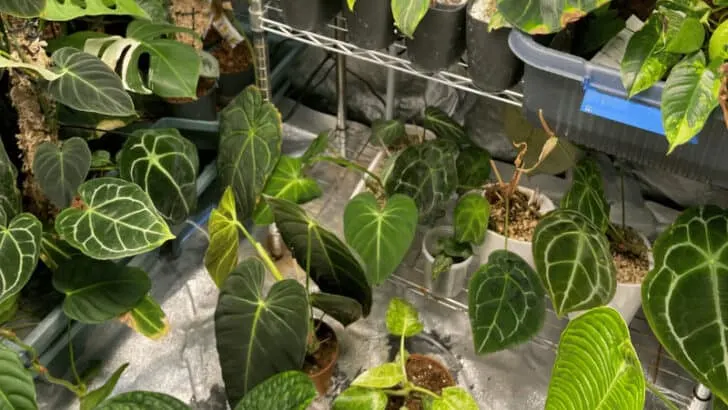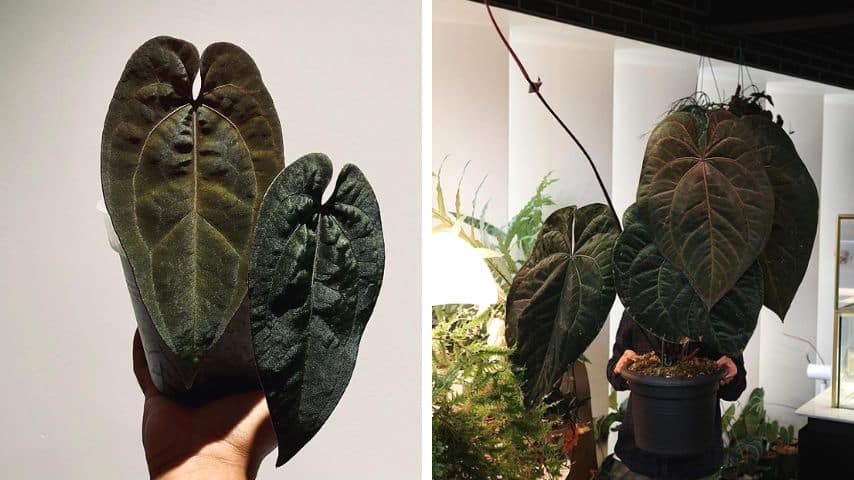There are more than 1000 varieties and species of Anthurium plants. The anthurium genus belongs to the Araceae family of flowering plants. Araceae stands for Aroid plants. One of the best-known Anthuriums is the Flamingo flower laceleaf, tailflower, and tail Anthurium.
Anthurium plants are often epiphytes. They grow on other objects and plants. Anthuriums produce aerial roots to hold onto objects.
Anthuriums are either crawling on the ground or climbing. Their inflorescence consists of a spathe and a spadix.
Anthurium plants prefer high humidity, warm temperatures, and well-draining soil. You can use this guide to identify your Anthurium correctly or look for new varieties to add to your collection.
Table of Contents
Anthurium Varieties and Species
The most popular Anthurium types are:
- Anthurium andraeanum
- Anthurium scherzerianum
- Anthurium hookeri
- Anthurium radicans
- Anthurium pedatoradiatum
- Anthurium coriaceum
- Anthurium clarinervium
- Anthurium crystallinum
- Anthurium crystallinum ‘Dorayaki’
- Anthurium faustomirandae
- Anthurium gracile
- Anthurium bonplandii
- Anthurium decipiens
- Anthurium schlechtendalii
- Anthurium pandurilaminum
- Anthurium magnificum
- Anthurium jenmanii
- Anthurium clavigerum
- Anthurium pendulifolium
- Anthurium luxurians
- Anthurium vittarifolium
- Anthurium splendidum
- Anthurium corrugatum
- Anthurium rotundistigmatum
- Anthurium forgetii
- Anthurium friedrichsthalii
- Anthurium villenaorum
- Anthurium podophyllum
- Anthurium metallicum
- Anthurium rugulosum
- Anthurium wendlingeri
- Anthurium regale
- Anthurium marmoratum
- Anthurium balaoanum
- Anthurium ‘Ace of Spades’
- Anthurium warocqueanum
- Anthurium veitchii
- Anthurium papillilaminum
- Anthurium ovatifolium
- Anthurium cutucuense
- Anthurium ‘Dark Mama’
- Anthurium clidemioides
- Anthurium rotolantei
- Anthurium polyschistum
- Anthurium radicans
- Anthurium pedatoradiatum
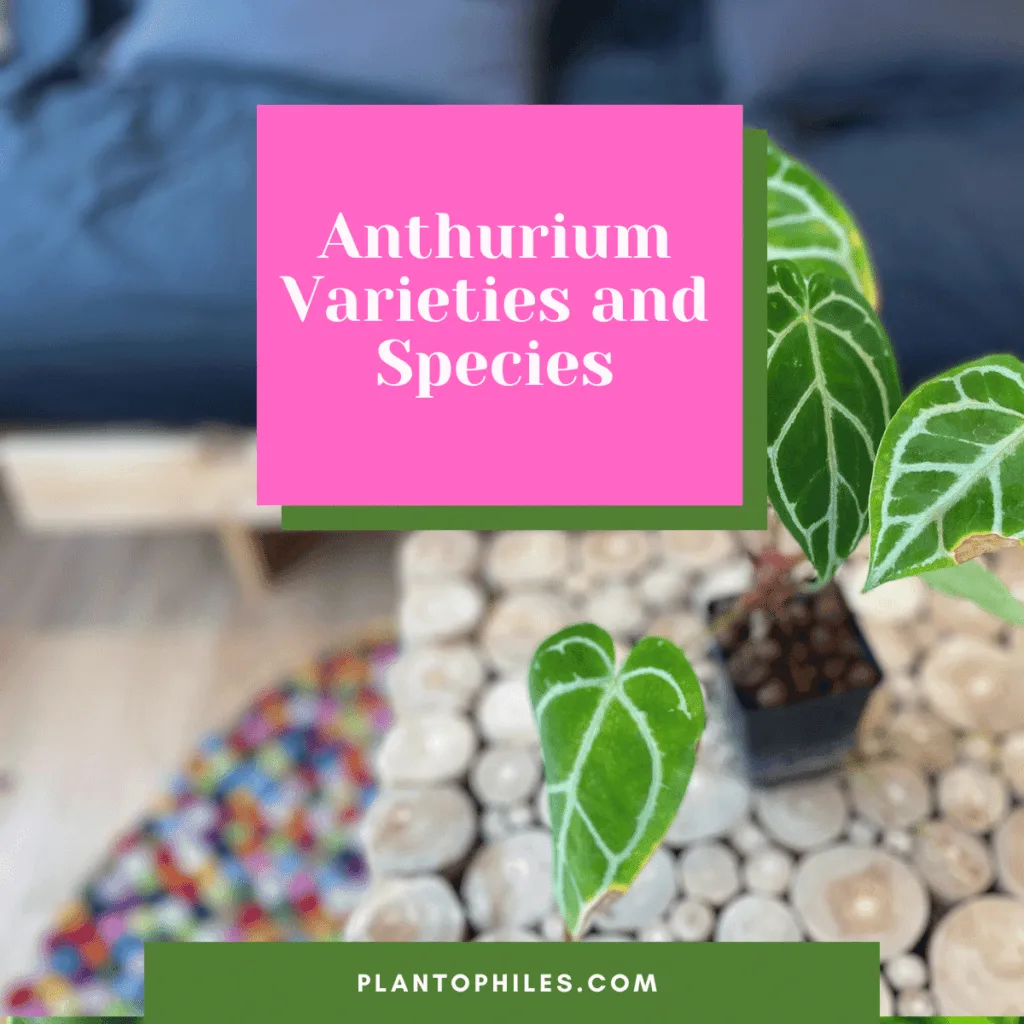
46 Beautiful Anthurium Varieties You Can Grow
1. Anthurium andraeanum (Anthurium andreanum)
The Flamingo flower is a plant from South America. It has green heart-shaped foliage. They produce colorful bracts that are pink, white, green, or yellow. The bracts are often confused with flowers. The actual flowers are small and part of the spadix. The flower multiple times a year.
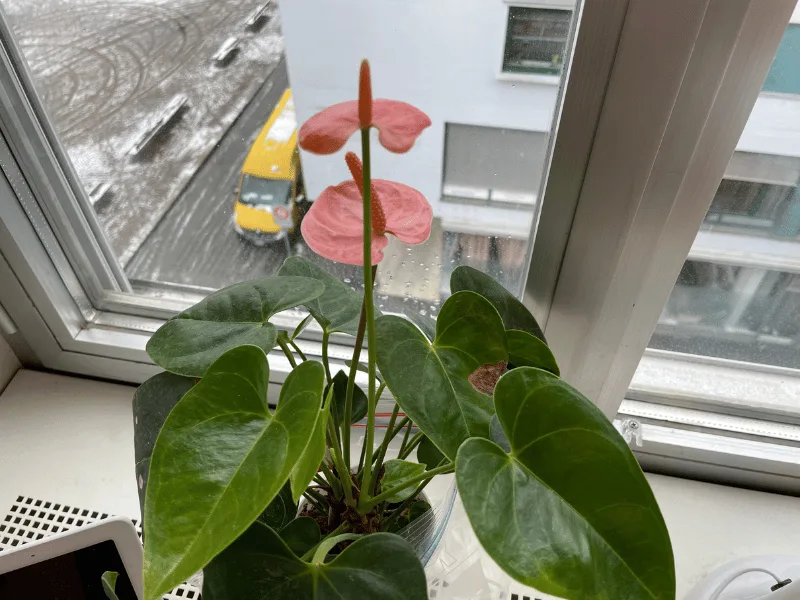
2. Anthurium scherzerianum
Anthurium scherzerianum is similar looking to andraeanum. It is known as the Painter’s Palette. This houseplant is native to Costa Rica.
Like many other aroids, it contains calcium oxalates and is toxic to cats, dogs, and humans.

3. Anthurium hookeri
According to the University of the West Indies, the bird’s nest Anthurium is originally from Trinidad. It is often sold as a hybrid. It is called a birds nest as it produces flowers in the center of the plant. It has short internodes and a dense root system. It is an epiphytic plant. It produces dark green, wrinkly leaves. The leaves are large.
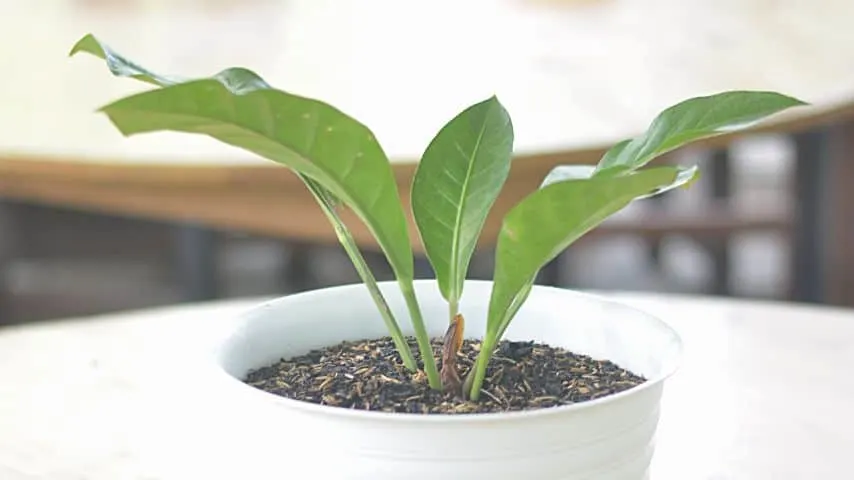
4. Anthurium radicans
An Anthurium plant from Brazil. It is a creeper. The leaves are deeply venated and cordate if you believe the University of Missouri-St.Louis. The bullate dark green leaves are heart-shaped. It produces pinkish flowers and also goes by the name Anthurium malyi.
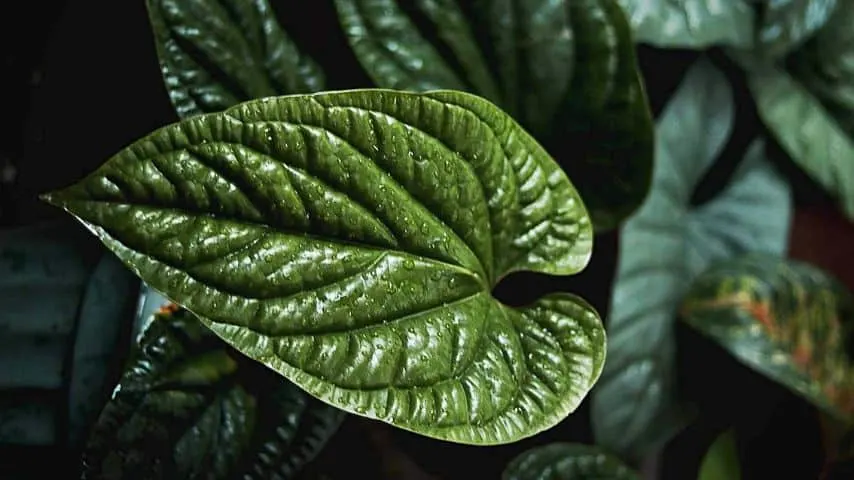
5. Anthurium pedatoradiatum
Anthurium pedatoradiatum derives from Mexico. It produces palmatifid leaves that look like fingers. There are 3-5 or more sections to each leaf. They produce green lanceolate spathes.
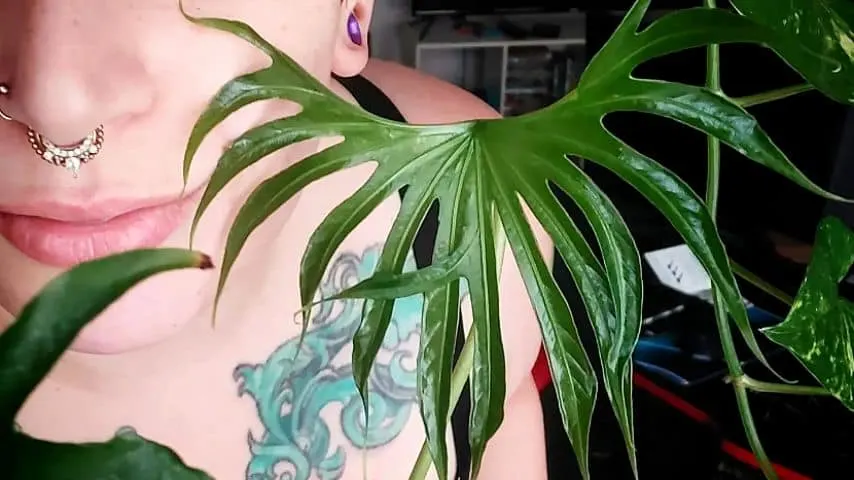
This plant grows at sea level up to 2624 feet (800m). The species belongs to the Schizoplacium section, according to Missouri Botanical Garden.
6. Anthurium coriaceum
Native to southeast Brazil. Belongs to the Pachyneurium section. It is a semi-epiphyte that either grows on the ground or other plants. The leaves are erect and leathery. It is a bird’s nest Anthurium with paddle-shaped leaves. The leaves themselves are velvety to absorb light and shed water.
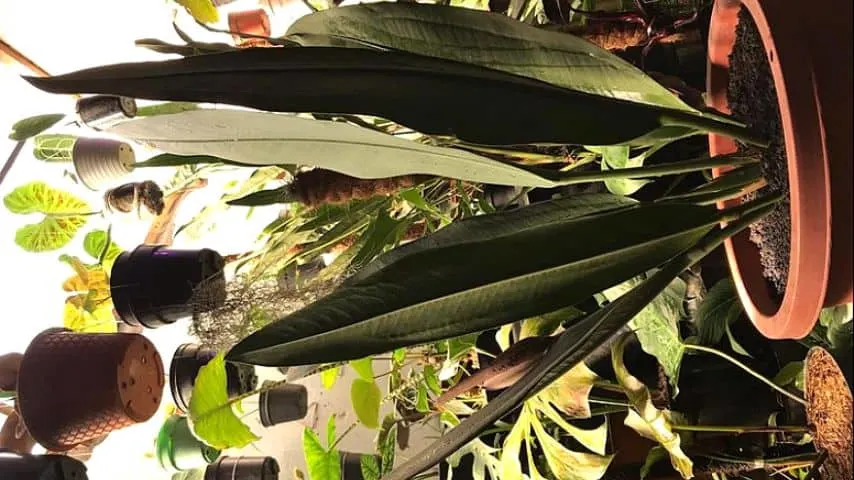
7. Anthurium clarinervium
This Anthurium produces dark green heart-shaped leaves with silver-grey veins. The foliage is cardboard-like. It is also called Velvet Cardboard Anthurium. It produces big orange berries when pollinated. Its native habitat is Chiapas, Mexico.
Read more about Anthurium clarinervium care.
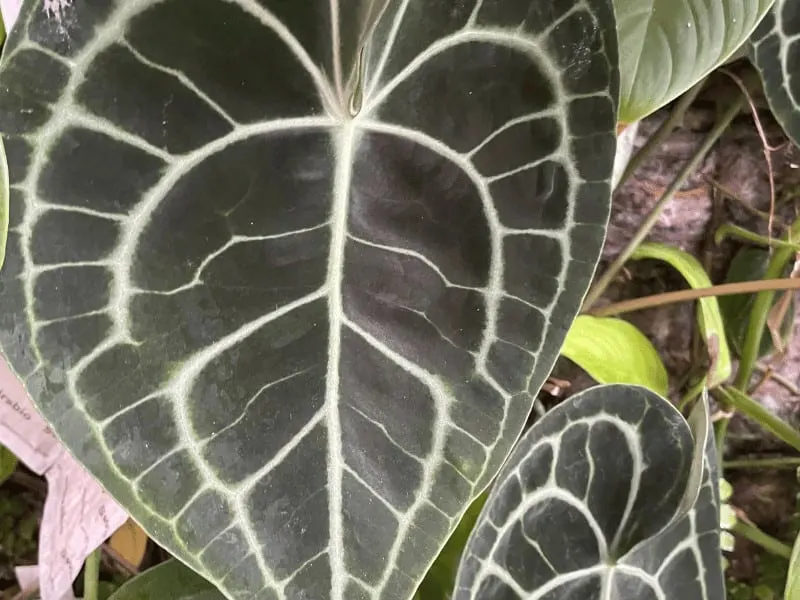
8. Anthurium crystallinum
Another Anthurium with dark green heart-shaped leaves with white or light green veins. It is a tropical evergreen from Colombia according to South Florida University.
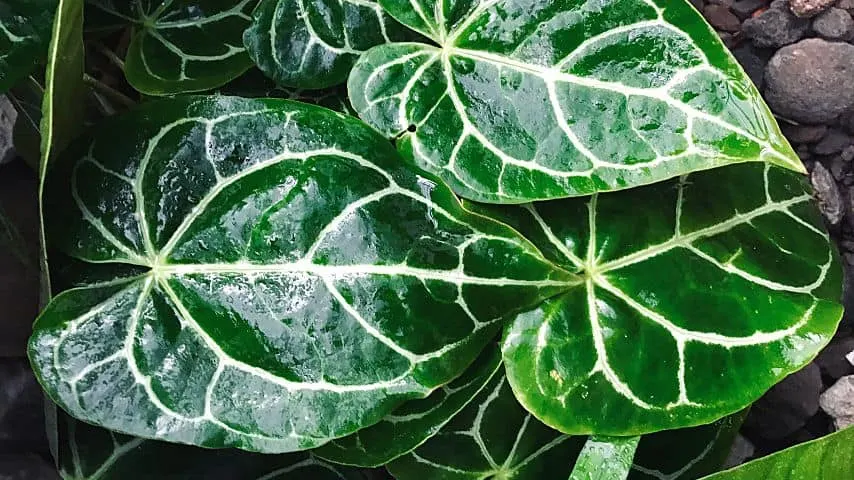
9. Anthurium crystallinum ‘Dorayaki’
Dorayaki is a reference to Japanese confectionery. The leaves are round and thick. It sports thick white pronounced veins.

The Anthurium crystallinum ‘Dorayaki’ is an Anthurium chrystallinum hybrid. The care is easy. Based on my experience, caring for hybrids is often easier than caring for their parent plants.
10. Anthurium faustomirandae (Common name is Faustino’s Giant)
According to Exoticrainforest Anthurium faustomirandae is endemic to Mexico. It has large velvety leaves on long petioles. Its leaves can grow up to 2 feet (60cm) and are cardboard-like. It grows in heights between 2100-3200 feet (850-1000 meters).
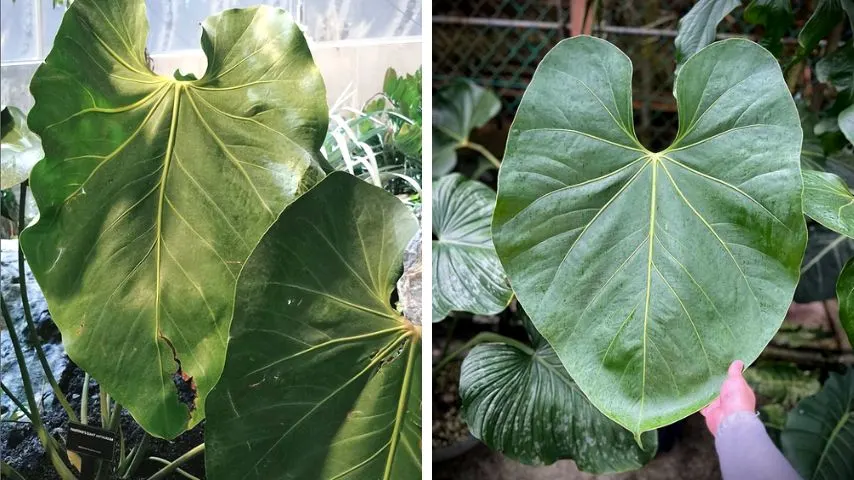
11. Anthurium gracile
This plant produces red berries. It is native to Belize and Guatemala. From Peru and the Guianas, Southern Brazil to the West Indies. It produces thick white roots that will hang down. It grows up to 29.5 inches (75cm).
Read more about Anthurium gracile.
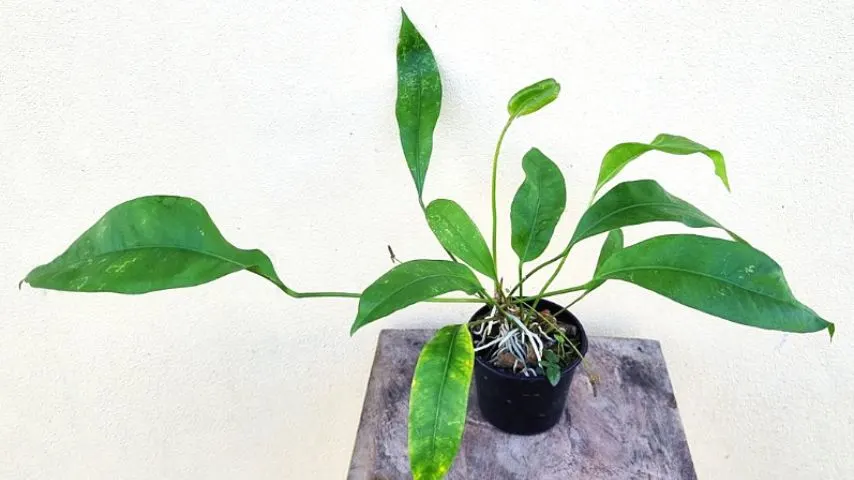
12. Anthurium bonplandii
A bird’s nest Anthurium from the Pachyneurium section. It was discovered in 1975 by Georg Bunting. The plant is native to Venezuela, Brazil, Guyana, Suriname, and the Amazon region.

It has large, broad leaves if you believe Exoticrainforest. The foliage is thick and leathery.
13. Anthurium decipiens
Anthurium Salgaense has been called Arthurium decipiens since 2019. It originates in Colombia. It has dark green leaves with a glossy shine. Its spadix is foul-smelling and attracts Sarcophaga flies. It produces black and red scarlet berries, according to Allistair Hay and Marco Cedeño Fonseca.
Read more about Anturium salgarense.
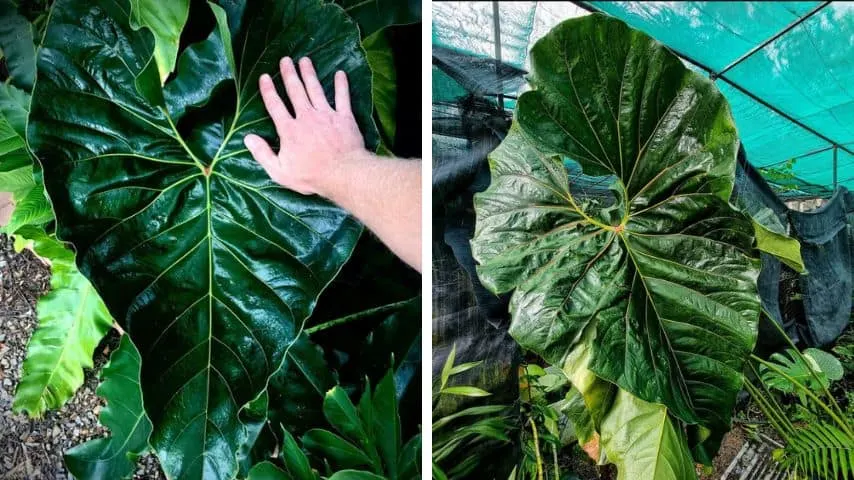
14. Anthurium schlechtendalii
Anthurium schlechtendalii is an epyphyte. It produces elongated red berries. This plant belongs to the bird’s nest Anthurium section.
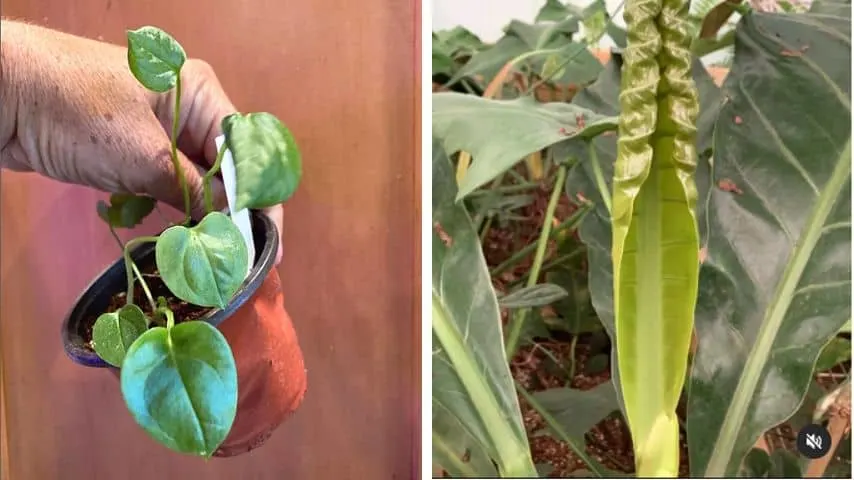
Thomas B. Croat described it. This plant originates from Mexico, and Costa Rica, says the University of Michigan. It has thick green roots, erect petioles, and short stems. It produces broad dark green erect leaves.
15. Anthurium pandurilaminum
This plant is also known as Anthurium bullatus. Croat described it in 2019.
It has light green arrowhead-shaped leaves. The leaves sport clear veining and turn dark green as they age. The leaves are velvet-like with a light shine.
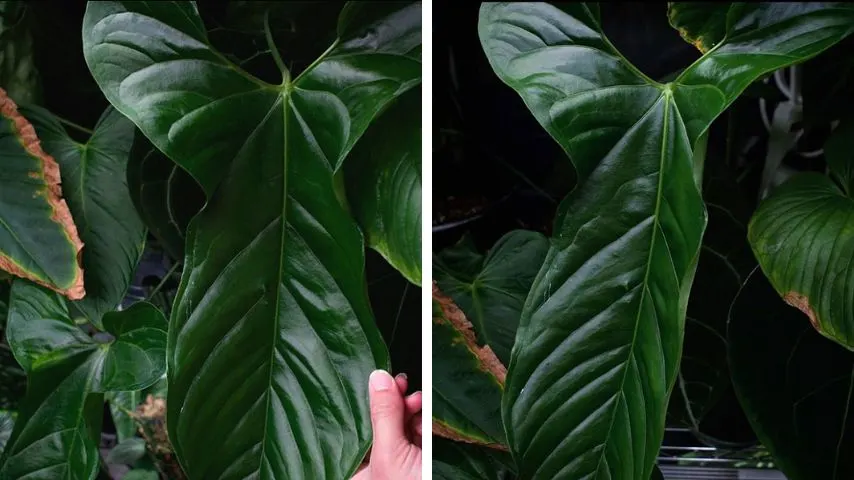
16. Anthurium magnificum
Native to South America, this Anthurium produces leathery leaves with white to green veining. The leaves themselves are dark green and heart-shaped. It is native to Colombia. It also goes by the name Anthurium sanderi if you believe Stellenbosch University.
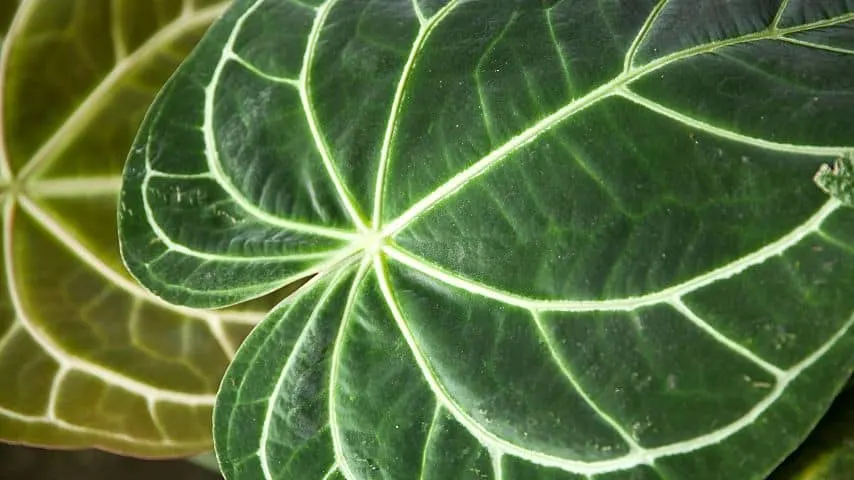
Read the Anthurium maginificum care guide on this blog.
17. Anthurium jenmanii
The inflorescence produces a spiraled spadix consisting of more than 100 flowers. It produces broad upright cardboard-like foliage.
This tropical plant belongs to the bird’s nest section (Pachyneurium). They are signified by short densely rooted stems and erect leaves. The leaves grow in a rosulate habit, says Aroid.org.
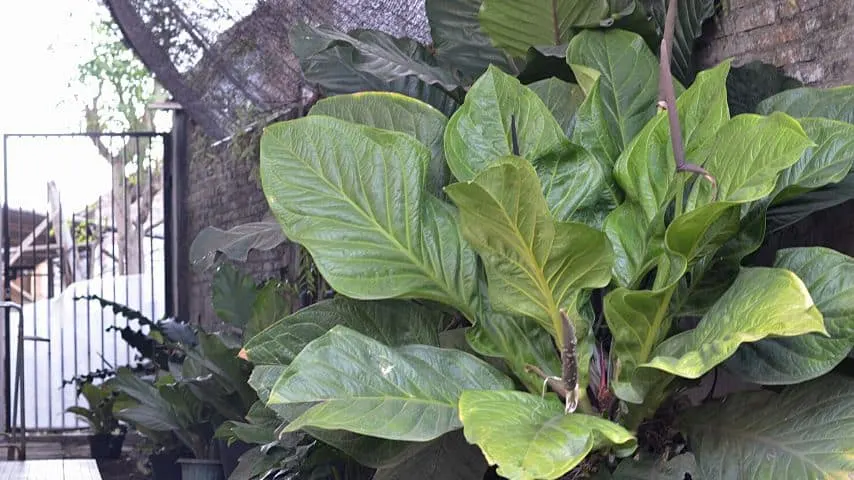
18. Anthurium clavigerum
This Anthurium species is native to Central America, Brazil, and Peru, according to Oldenburg University. This lowland species doesn’t grow above 2296 feet (700 meters).
It produces an elongated drooping spadix. The plant is a large epiphytic plant. It produces palmate leaves once adult.
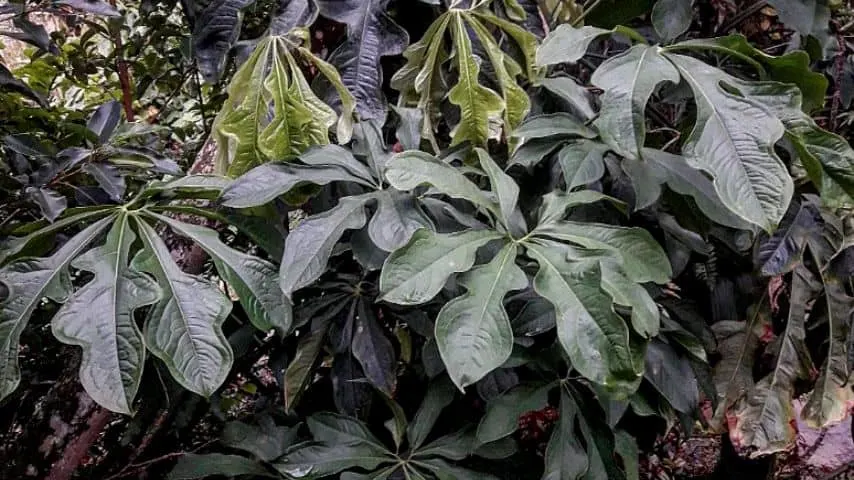
19. Anthurium pendulifolium
Epiphytic plant growing in lowland tropical forests. It derives from Colombia, Ecuador, and Peru.
The plant is pendent growing and is suited for a hanging pot. It produces long strap leaves. It grows between 330-1445 feet (100-440 meters), says Exotic Rainforest.
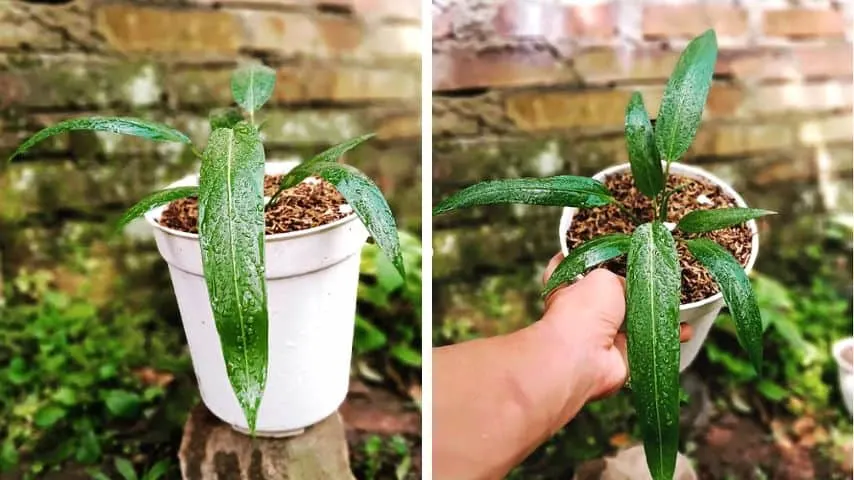
20. Anthurium luxurians
Anthurium luxuriant is a stunning Anthurium with dark-green bullate leaves. The leaves are thick, like cardboard, and heart-shaped. It is endemic to Colombia.
Plants with arching veins usually require very high humidity. The luxurians is no exception as it thrives in 80% humidity and more. It has short thick stems and internodes, according to Aroid.org.
I have this specimen in my collection for more than two years already. Read more about Anthurium luxurians care here.
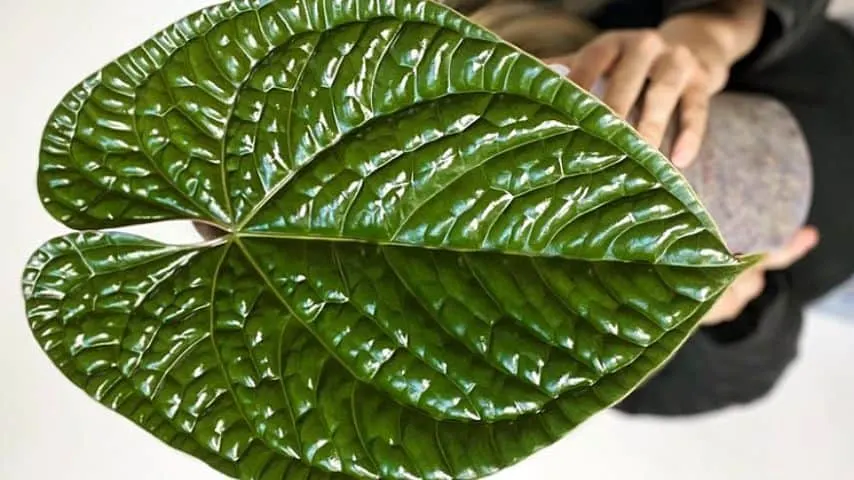
21. Anthurium vittarifolium
This is a rare houseplant deriving from Columbia in South America. Produces a red inflorescence and pink berries. It produces long thin pendant leaves.
It is epiphytic and grows in tree branches. It has long aerial roots and is an iconic strap-leaf Anthurium that can reach 6ft long and 2in wide.
Anthurium vittarifolium growing guide.
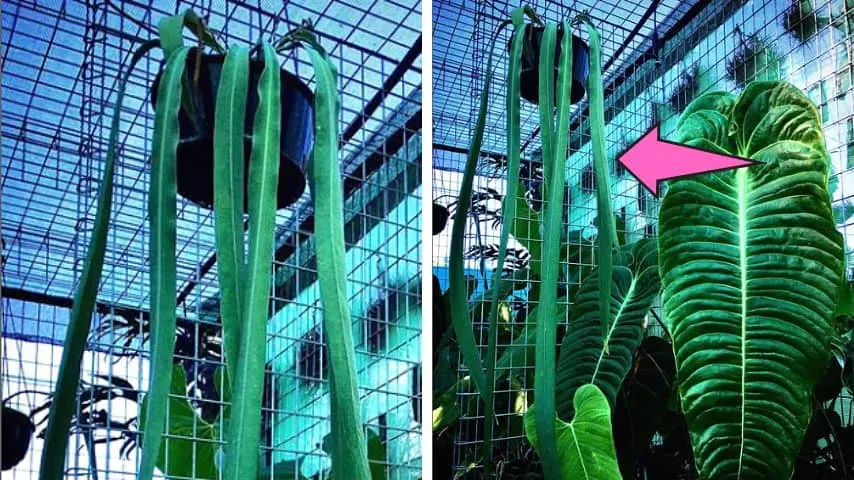
22. Anthurium splendidum
This aroid plant is native to Ecuador and Colombia. It has green bullate leaves and prefers high humidity above 70%. This plant was first described in 1883.
It belongs to the Cardiolonchium section, according to Aroid.org. The velvety green leaves reach a size of 1 foot in diameter (30,48cm).
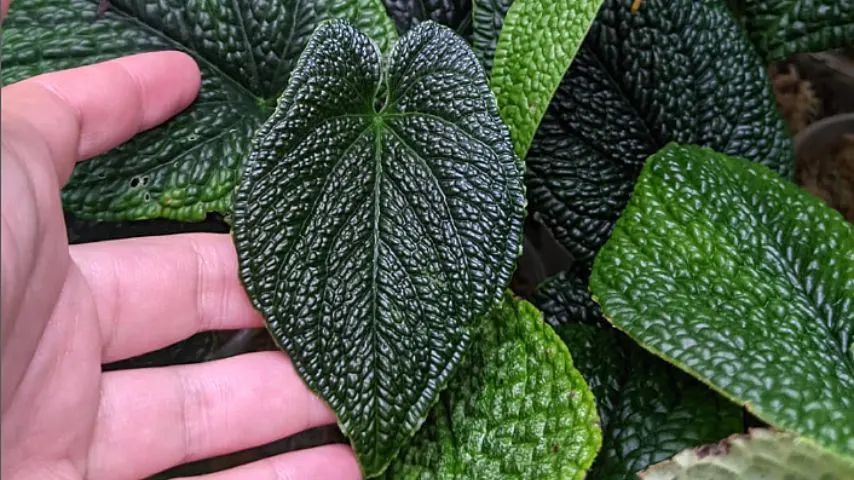
23. Anthurium corrugatum
Green corrugated leaves and long petioles. The bullate leaves increase the ability to take in sunlight from all angles.
These deep green leaves are adapted to wet and humid conditions. The blistered leave allows to channel the water and allow them to dry quickly, according to Exotic Esoterica.

24. Anthurium rotundistigmatum
Epiphyte with stems reaching up to 11.8 inches (30cm), according to Aroid.org. It is native to Panama and Colombia.
It has long petioles and large dark green leaves. The leaves are heart-shaped with a clear venation.
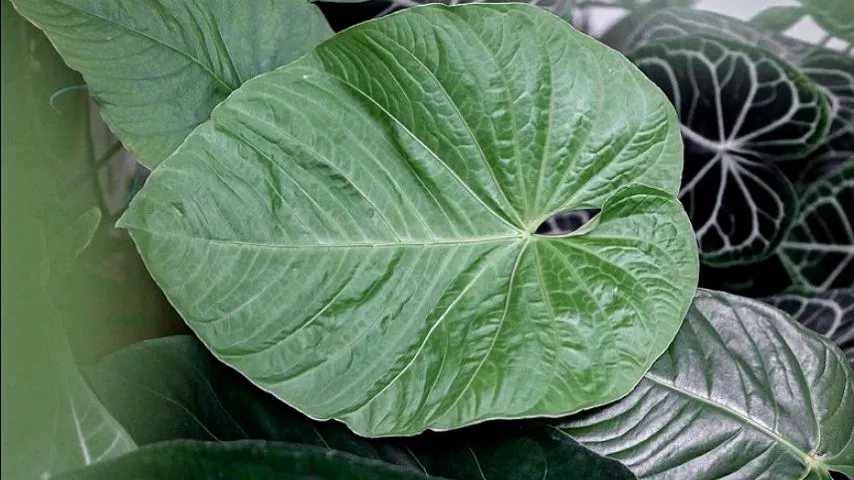
25. Anthurium forgetii
Available in plain green and a variety with silver veining. Anthurium forgetii is native to Colombia and Ecuador. It is an epiphytic terrestrial. Its care is a bit more complicated compared to most other Anthuriums.
I have multiple forgetii plants in my care. The care is not as difficult as described
Anthurium forgetii care guide.
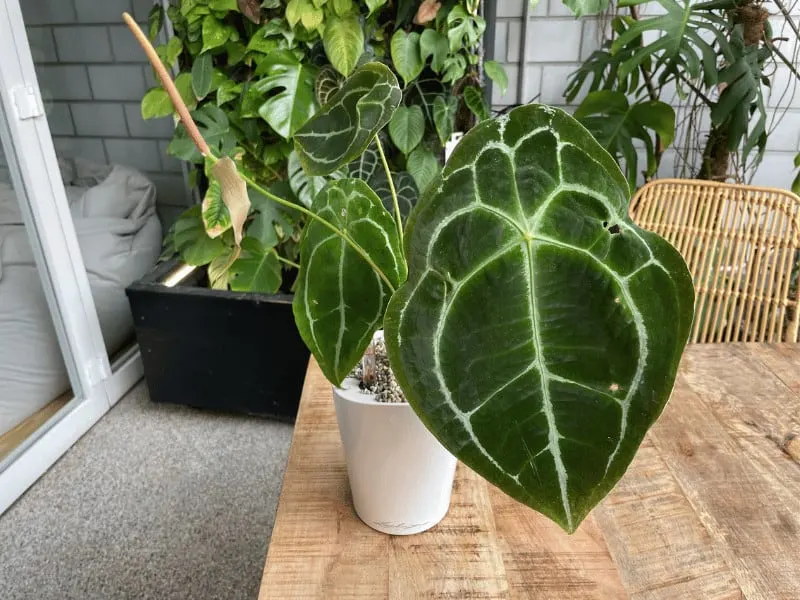
26. Anthurium friedrichsthalii
Epiphyte with long pendant leaves. The inflorescence is also hanging, and the plants are often only loosely attached by air roots, according to Aroid.org. The spadix is pale green to purple.
It belongs to the Anthurium genus and was described by Schott. It has thin pendant green leaves. Its native habitat is Colombia and Panama. It grows in the mid-forest between 1968-2624 feet (600-800m), according to Plazi.org.
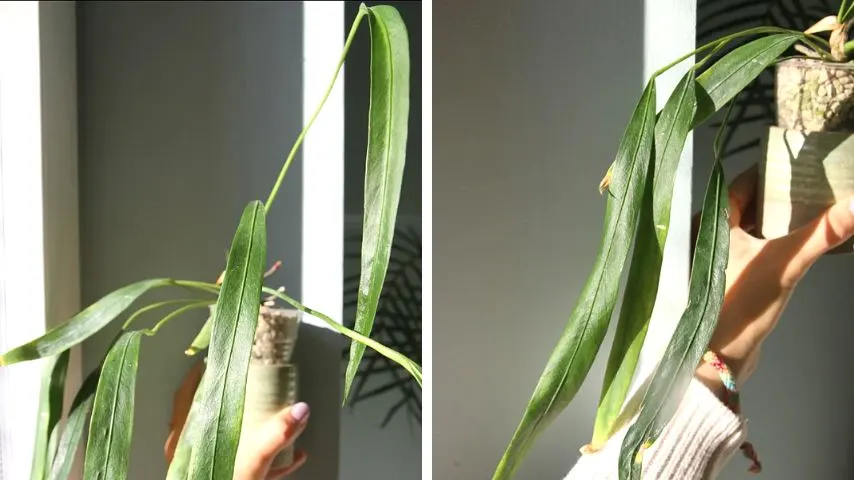
27. Anthurium villenaorum
Villenaorum is a herbaceous evergreen. It is a very easy Anthurium to care for, and I am growing multiple specimens in my collection.
The large dark green, heart-shaped leaves with their white-to-grey lining are striking. It originates from Peru. It is a strong bloomer that blooms up to five times a year. It has triangular petioles and velvet leaves.
Anthurium villenaorum care guidelines.
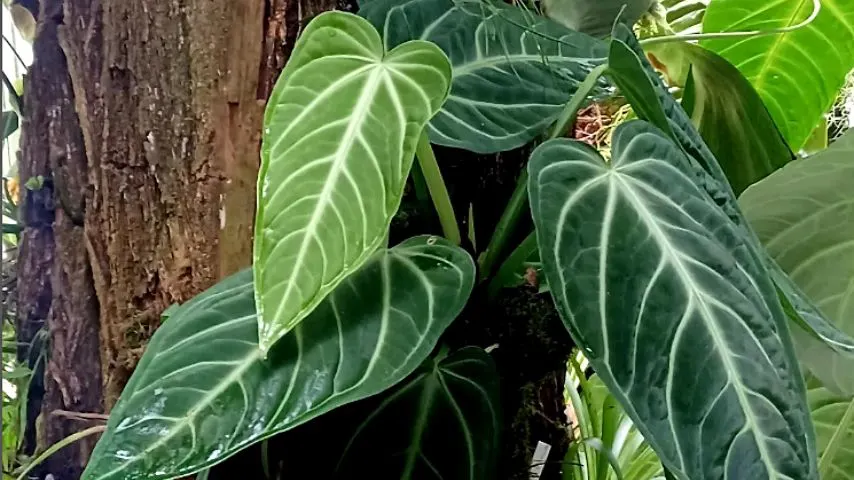
28. Anthurium podophyllum
An Anthurium from Mexico. Unique plamatif “frilly” leaves. The leaves are green, and the petioles are long. It lives in higher elevations between 2460-6561 feet (750-2000m).
According to Exotic Rainforest, these species belong to the Schizoplacium section.
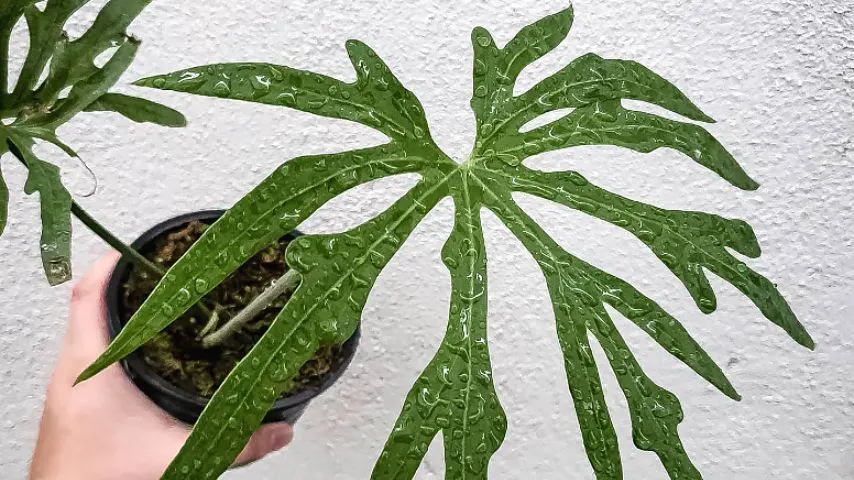
29. Anthurium metallicum
Anthurium metallicum is one of my favorite Anthurium. It produces enormous dark velvety leaves. The veining is prominent and light green. It originates from Colombia.
Metallicum is a bit finicky and requires humid conditions to thrive.
Read the Anthurium metallicum growing guide.
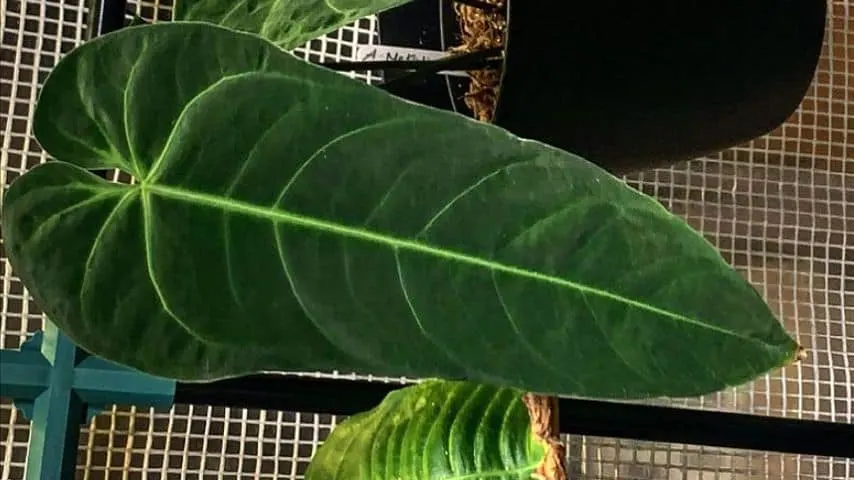
30. Anthurium rugulosum
An exotic species with cordate and conspicuous leaves. The foliage is bullate. It is found in Ecuador and Colombia. It grows in high altitudes between 3500 to 8500 feet (1150 to 2800 meters).
It prefers very humid conditions of >70%. It thrives in cooler temperatures.
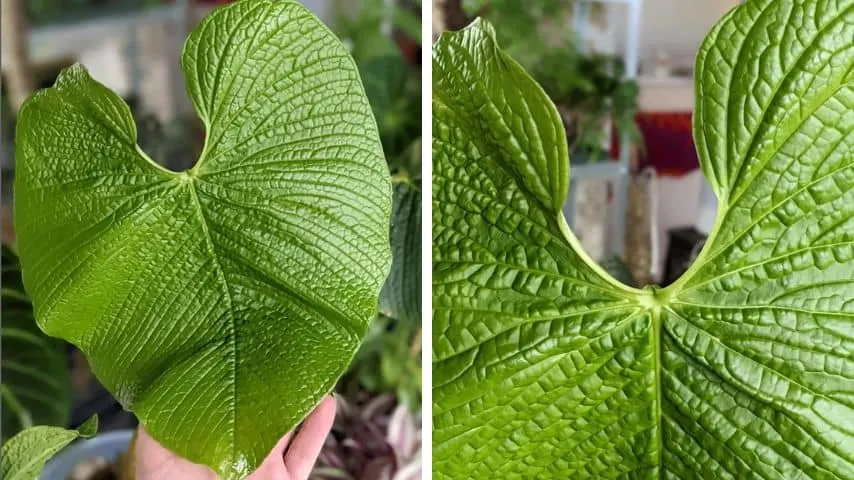
31. Anthurium wendlingeri
A laceleaf Anthurium with a corkscrew-shaped inflorescence. This is a rare Anthurium and hard to find.
It produces rippled green leaves that are almost grey. The leaf, as well as the foliage, is pendent. This strap leaf Anthurium is an epiphyte and belongs to the Porphyrochitonium section.
In-depth Anthurium wendlingerii care guide.

32. Anthurium regale
Anthurium regale has the most stunning foliage I have ever seen. The leaves grow on very long petioles or stems. You often get one chunk with a single leave when purchasing these plants. The leaves have very pronounced white veins. The veining can be light green to white.
The leaves grow up to 4 feet in length (1.2m). This velvety beauty was introduced in the 1800s in Europe. They originate from Mexico, Ecuador, and Colombia.
Anthurium regale growing guide.
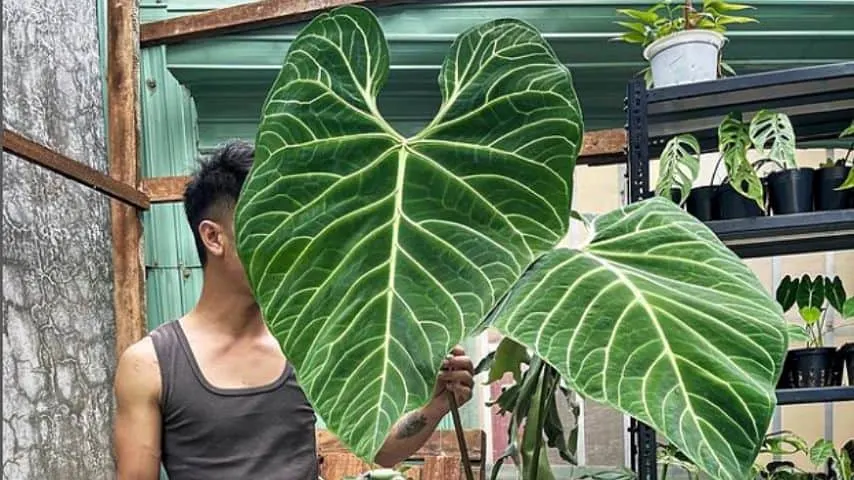
33. Anthurium marmoratum
Exotic Rainforest mentions that Sodiro discovered this species first in Ecuador in 1903. Some voices say that this is Anthurium angamarcanum.
Anthurium plants change their appearance often with age. Juvenile plants can look different from aged plants. In addition, there is a lot of variance due to morphogenesis. This process defines the way an organ or tissue is going to look like. It is native to Ecuador and Colombia.

34. Anthurium balaoanum
This indoor plant was previously known as Anthurium Dussii. It has a velvety touch and a leathery texture. It features large arrow-shaped leaves. It is native to Ecuador.

35. Anthurium ‘Ace of Spades’
Anthurium AOS is a rare plant. It has dark green velvety leaves. The foliage is heart-shaped. It still costs several 100 dollars to buy.
AOS is a hybrid of unknown origin. There is said to be a dark form of Anthurium Ace of Spades. It was released in 1998 by Denis Rotolante, according to Aroidcultivars.org.
36. Anthurium warocqueanum (Queen)
The Queen Anthurium has large pendant leaves. The leaves are dark green and velvety. The foliage is cardboard-like or coriaceous.
I grow these plants in my tent and have previously grown them in the living room. If you water them right and provide sufficient humidity, the leaves grow stunningly. If the humidity is low and you are infrequently watering, you can get crispy leaves.
Anthurium warocqueanum growing guide.
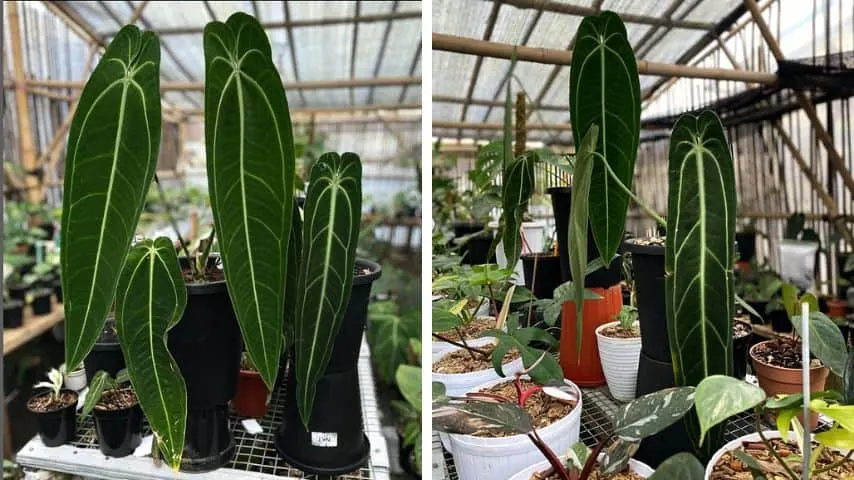
37. Anthurium veitchii (King)
The King Anthurium is an easy-care plant with large ruffled leaves that look like abs. There is a wide and narrow form.
The wide-form Anthurium veitchii is a hybrid. The narrow form Anthurium veitchii is the natural form. It is native to the rainforests in Colombia.
Anthurium veitchii care guide.
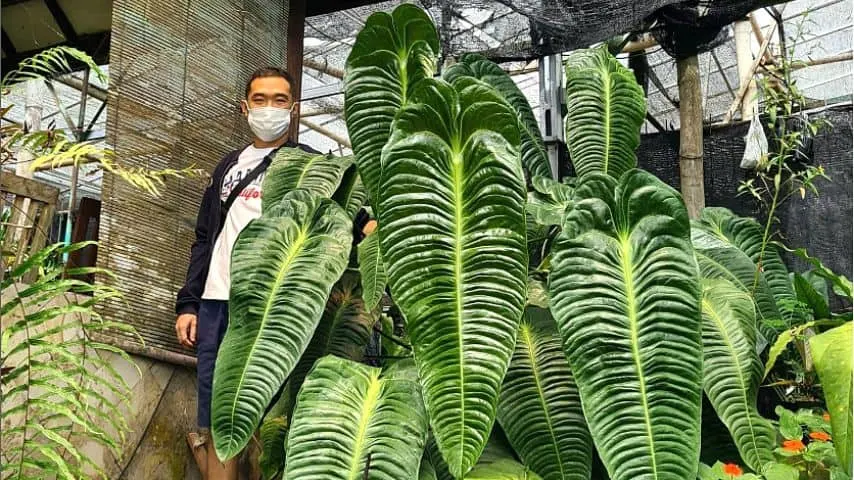
38. Anthurium papillilaminum
The Anthurium papillilaminum is also known as Anthurium papillilaminum Croat. It has ovate olive-green leaves and a small spadix. The foliage is subcoriacious. The petioles are erect.
It is only endemic to Panama, says Exotic Rainforest. The inflorescence stands above the leaf.
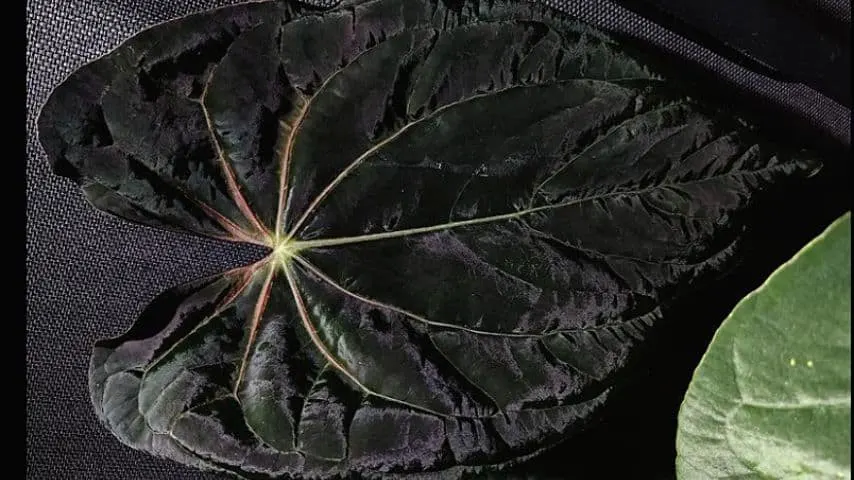
39. Anthurium ovatifolium
The Anthurium ovatifolium is native to the tropical regions of South America, including Columbia and Ecuador. It has red berries and large green foliage. It has coriaceous blades with basal veins.
These plants grow in rainforests and wet forests. It grows epiphytic and terrestrial, according to Royal Botanical Gardens.
It belongs to the Digittinervium section.
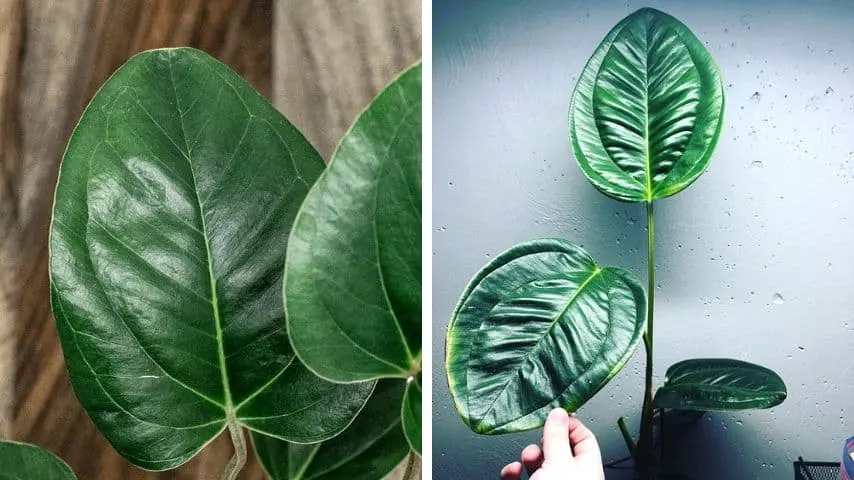
40. Anthurium cutucuense
This plant is native to Ecuador with elongated trisect leaves. It grows in mountain regions growing in cloud forests. This plant is difficult to care for.
It belongs to the 3-Segmented Dactylophyllium section. This section has palmated leaf blades. It is either Hemi epiphytic or epiphytic. These plants grow up to 8m high (26 feet), according to Aroid.org.
Anthurium cutucuense growing guide.
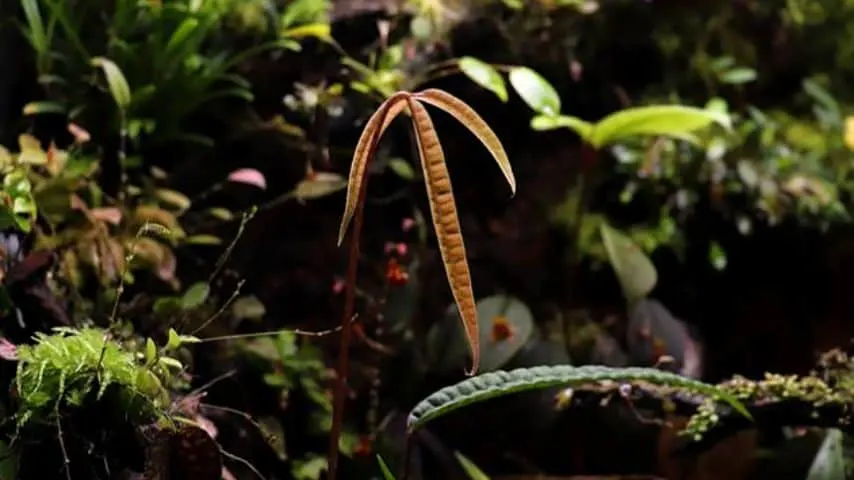
41. Anthurium ‘Dark Mama’
The Anthurium ‘Dark Moma’ is a hybrid (x) between papillilaminum × warocqueanum. It is a rare Aroid plant.
This Aroid has intense green heart-shaped leaves with light green veining on the adaxial leaf surface.
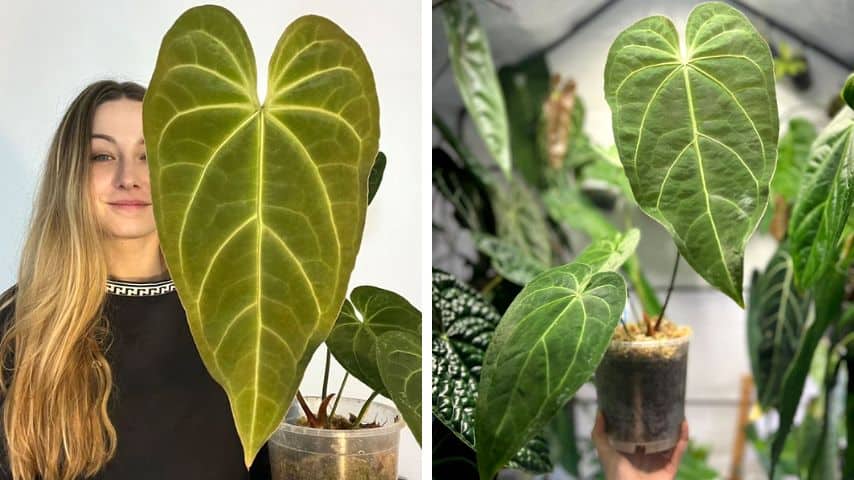
42. Anthurium clidemioides
Anthurium clidemioides was first described in 1940 by Standley. Its name derives from the resemblance to the soap bush Clidemia hirta according to Exotica Esoterica.
It grows in the understory of the tropical rainforest of Costa Rica and Panama. These plants grow at sea level. This plant has green bullate leaves and satin-velvet uppersides.
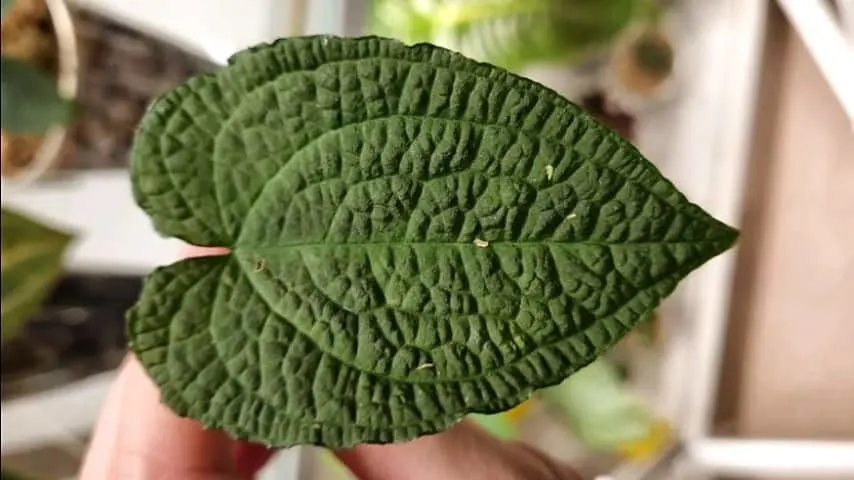
43. Anthurium rotolantei
A pebbled-leaf Anthurium. The bullate leaves are dark green and heart-shaped. It is named after Denis Rotolante.
The foliage is velvet-like, corrugated, and has a crystalline shine. It is easy to grow but hard to find and expensive to buy.
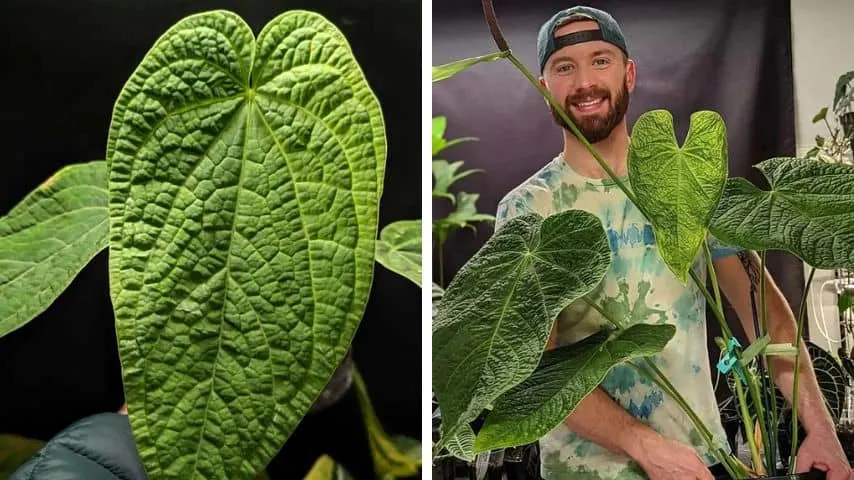
44. Anthurium polyschistum
This plant belongs to the Schizoplacium section. It grows in central and South America. it has palmate leaves. It grows in Brazil, Ecuador, Peru, and Bolivia.
This plant creeps on the forest floor and is sometimes epiphytic. Its main feature is multiple small leaves attached umbrella-like around the petioles.
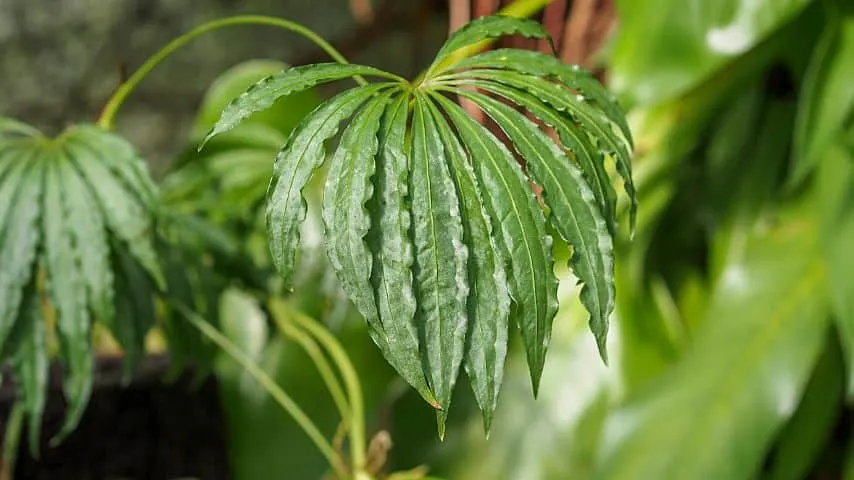
45. Anthurium radicans
Dark green bullate leaves. The foliage is heart-shaped and sturdy.
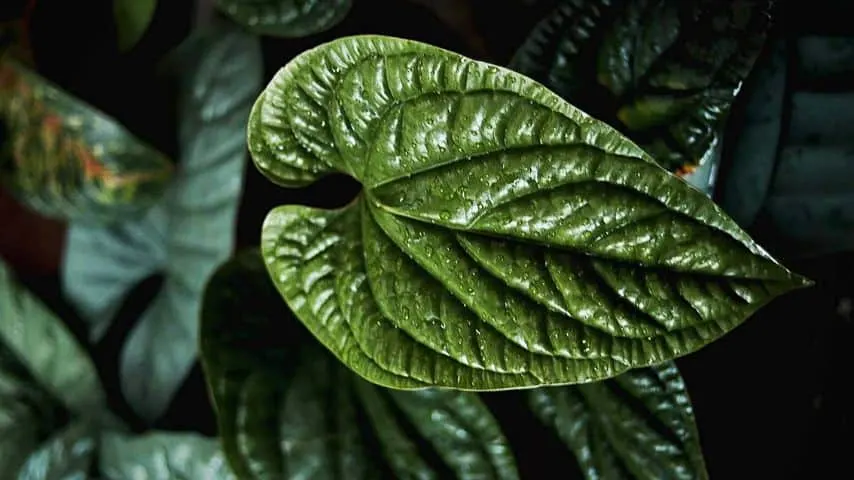
One common cross of this plant is Anthurium radicans x dressleri. It produces an ellipsoid spadix.
It belongs to the Chamaerepium section, according to Aroid.org.
46. Anthurium pedatoradiatum
This plant is also known as Anthurium fingers. The reason is the green, finger-like leaves. They fan out and are palmatifid. This plant derives from the south of Mexico.
Anthurium pedatoradiatum growing guide.
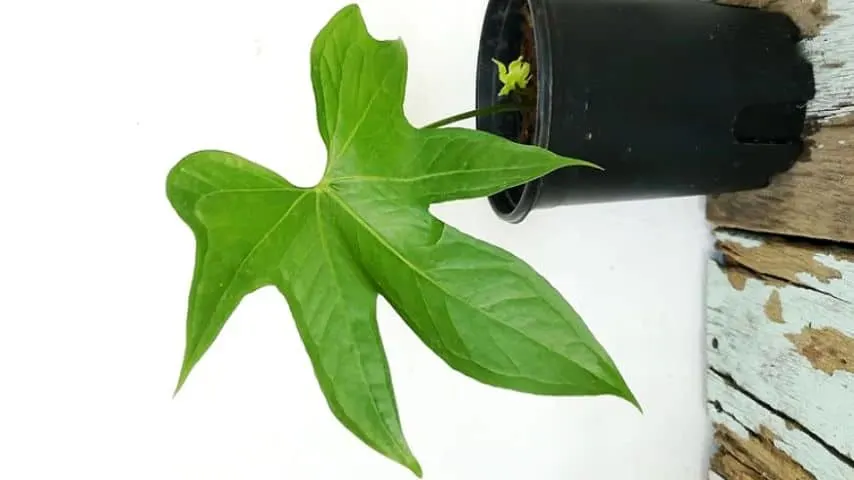
Beautiful Anthurium Species And Varieties
Some of the most stunning Anthurium varieties are:
- Anthurium warocqueanum
- Anthurium veitchii
- Anthurium luxurians
- Anthurium papillilaminum
- Anthurium metallicum
Collecting Anthuriums
For me, collecting Anthuriums is a great hobby. One of the main reasons is that there are more than 1000 species and beautiful varieties to choose from. You have vastly different-looking plants.
Some have lance-shaped leaves; others have upright leaves. The leaf texture varies from glossy to velvety to bullate.
Another is that it is quite simple to self-pollinate these plants and create crosses between them. Lastly, most Anthurium plants are easy to care for, and prices are getting more affordable.
It is always a pleasure to see new leaves growing.
Some Anthurium Varieties Are Difficult to Care for
There are Anthurium varieties that are more difficult to care for. Usually, the ones with bullate leaves and also velvety leave are reserved for more experienced growers. The reason is that they usually require higher humidity levels.
Anthuriums that are harder to care for are:
- Anthurium warocqueanum
- Anthurium luxurians
- Anthurium corrugatum
- Anthurium splendidum
Prices And Availability Depend Upon Your Area
Prices of Anthurium plants have come down substantially. 2-3 years ago, I paid between 150-200 USD per small plant for an Anthurium warocqueanum and Anthurium veitchii. Now the same plants are priced between 30-50 dollars per plant.
Anthurium Care (Flamingo Flower Houseplant)
Soil
The Flamingo flower needs well-draining soil. A good soil mix for aroid plants is a potting mix between charcoal, perlite, orchid bark, peat moss, some potting soil, and compost.
Water
Water about once a week. When watering, water heavily but only once the top 1-inch of soil is almost dry to the touch.
Light
Anthurium plants grow best in bright indirect sunlight. You can also use artificial light by using a grow light.
Temperature
The ideal temperature range for Anthuriums is between 65-80°F (18-27°C).
Humidity
The ideal humidity is 60-80%. A lot of Anthurium varieties prefer very high humidity levels above 70%.
Fertilizer
Fertilize at least once a month in spring and summer. Use a balanced NPK fertilizer of NPK 5-5-5, 10-10-10, or 20-20-20 every four weeks. Reduce or stop fertilization in autumn and winter.
Flowering
Anthurium flowers readily flower multiple times a year. It produces a spathe and a spadix.
The spathe is a modified leaf, and the spadix consists of small flowers.
Read the full Anthurium growing guide here.

Daniel has been a plant enthusiast for over 20 years. He owns hundreds of houseplants and prepares for the chili growing seasons yearly with great anticipation. His favorite plants are plant species in the Araceae family, such as Monstera, Philodendron, and Anthurium. He also loves gardening and is growing hot peppers, tomatoes, and many more vegetables.

